About This Project
Saltwater crocodiles are the world's largest reptile and an apex predator. The goal of this study is to monitor, via satellite tagging, the behaviour by which this cryptic species regulates its body temperature in Sabah, Malaysia. This investigation will give insight into basking site selection, frequency of use, duration of stay, and the possible impact of habitat degradation. Work such as this is critical to future conservation and management.Ask the Scientists
Join The DiscussionWhat is the context of this research?
Behavioural thermoregulation is a critical activity enabling optimal thermoregulation. Basking, movement between land and water, is therefore crucial for crocodilian health in terms of metabolism, immunoresponse, and energetics. Non-invasive satellite tags will monitor basking behaviour on a temporal and spatial level across diurnal and seasonal time-scales.
Funding provided via Experiment will increases our sample size of tagged animals allowing discrimination between individual and population level behaviours. Datasets from three years of previously tagged crocodiles along with climate datasets will give an insight into long and short term behavioural patterns. Understanding basking behaviour on an individual and population level will assist future conservation and management efforts.
What is the significance of this project?
- Due to their cryptic nature crocodilian behaviour is underrepresented when compared to other predatory megafauna.
- Saltwater crocodiles, having faced near extinction, have made a tentative return in Sabah, Malaysia.
- Malaysian crocodiles now face the growing threat of habitat loss.
- In particular, the loss of possibly important basking sites, disrupting the ability of these animals to optimally thermoregulate
- This disturbance is seen along the Kinabatangan River as oil palm plantations bordering the shoreline radically altering the riparian zones.
- An inability to thermoregulate optimally would have a negative impact on the local crocodile population.
- It is critical therefore to understand the long and short term, individual and population level aspects of crocodile basking behaviour.
What are the goals of the project?
- Retrieval and analysis of six months radio-tracking data of C. porosus individuals
- Identification of critical abiotic and biotic variables in C. porosus basking site selection
- Examine seasonal and diurnal patterns in basking frequency
- Quantify the impact of Human mediated habitat fragmentation on C. porosus basking site choice
- Analysis of previous datasets collected by Mr Luke Evans for long-term, inter individual comparison
- The application of this information towards improved crocodilian conservation and habitat management in the Sabah Province of Malaysia
- Advise on mediation of local Human Crocodile Conflict (HCC)
- Publication of findings in a peer-reviewed academic journal
Budget
Crocodilians are cryptic by nature quickly learning to evade humans in observational studies. Combined with their amphibious lifestyle this makes crocodilian behaviour a challenge to practically record in the long-term.
The majority of the budget (2,000$) will go towards the purchase of two satellite tracking tags. This will allow the continuous monitoring of two individuals over a number of months via remote data relay. These tags return spatial and temperature data.
These additional satellite tags will double the present sample size, with two crocodiles currently tagged in the field. Increasing the sample size will allow us to distinguish between what may be individual or population level behavioural patterns. This would include being able to tag crocodiles of various size classes and of both genders.
The remainder of the budget (500$) will contribute to energy expenses. This funding adds to a current budget of 3,000$ dollars derived from postgraduate fees and personal savings.
Meet the Team
Team Bio
I have had a passion for all things crocodilian ever since I learned the devastating fate of my first love, the dinosaurs. My dream to work with these captivating predators was finally realised in 2013 when I travelled to Peru to conduct research for my final year undergraduate project.In association with Operation Wallacea, my research investigated possible niche partitioning in the three endemic caiman species. Nocturnal caiman surveys, swarms of mosquitos, boisterous river dolphins, and raucous macaws reaffirmed my passion for field ecology and research.
Following on from this experience I spent three months in the Mojave desert, California State, as part of a research team examining predator-prey interactions between sidewinder rattlesnakes and kangaroo rats.
My other travels have brought me to South Africa, where I volunteered in a Big Cat conservation park, down under to Australia, and inter-railing across Europe. My other interests include, photography, reading and film.
Timothy Garvey
I have had a passion for all things crocodilian ever since I learned the devastating fate of my first love, the dinosaurs. My dream to work with these captivating predators was finally realised in 2013 when I travelled to Peru to conduct research for my final year undergraduate project.
In association with Operation Wallacea, my research investigated possible niche partitioning in the three endemic caiman species. Nocturnal caiman surveys, swarms of mosquitos, boisterous river dolphins, and raucous macaws reaffirmed my passion for field ecology and research.
Following on from this experience I spent three months in the Mojave desert, California State, as part of a research team examining predator-prey interactions between sidewinder rattlesnakes and kangaroo rats.
My other travels have brought me to South Africa, where I volunteered in a Big Cat conservation park, down under to Australia, and inter-railing across Europe. My other interests include, photography, reading and film.
Additional Information
This study will be conducted from the Danau Girang Field Centre in the Lower Kinabatangan Wildlife Sanctuary in collaboration with the Sabah Wildlife Department.Dr Benoit Goossens, the director of the DGFC will be the acting supervisor of the project.
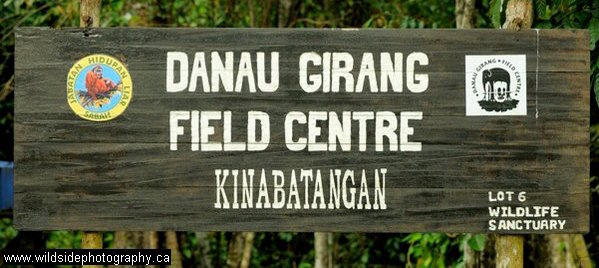
Doctoral student Luke Evans has been conducting satellite tagging on the Crocodylus porosus population of the Lower Kinabatangan region for the past three years. He will be a contributing co-author and font of knowledge for this upcoming project.
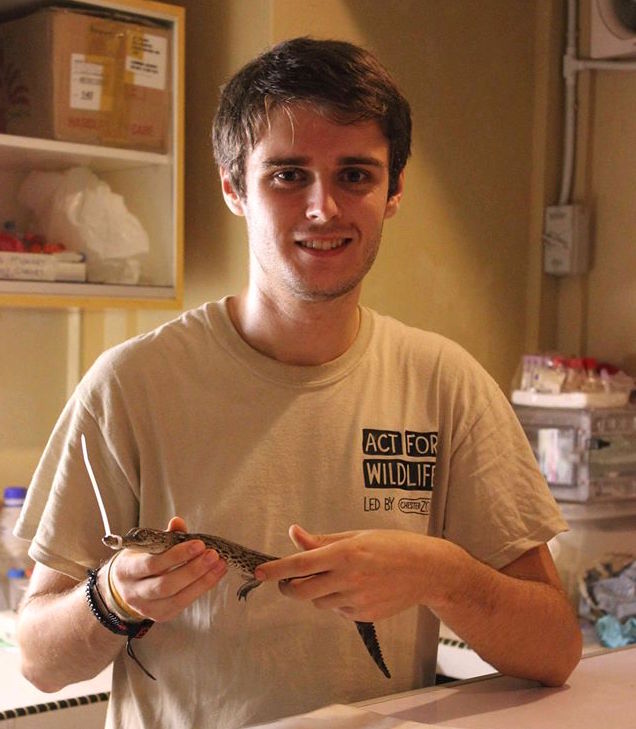
Submerged crocodile trap.
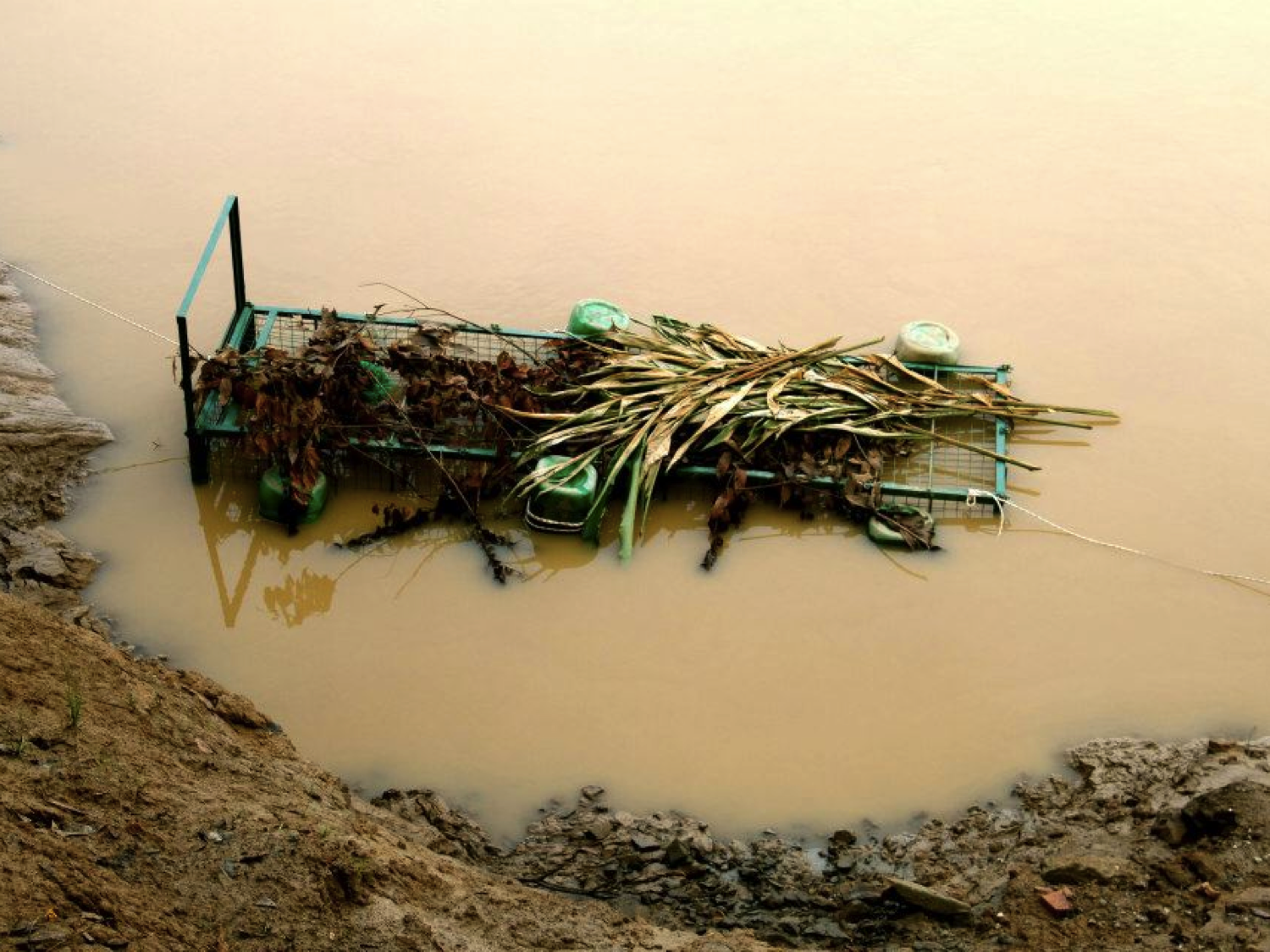 Small Crocodylus porosus, captured for potential tagging.
Small Crocodylus porosus, captured for potential tagging. Restraining the animals jaw, while still safely contained in the trap.
Restraining the animals jaw, while still safely contained in the trap.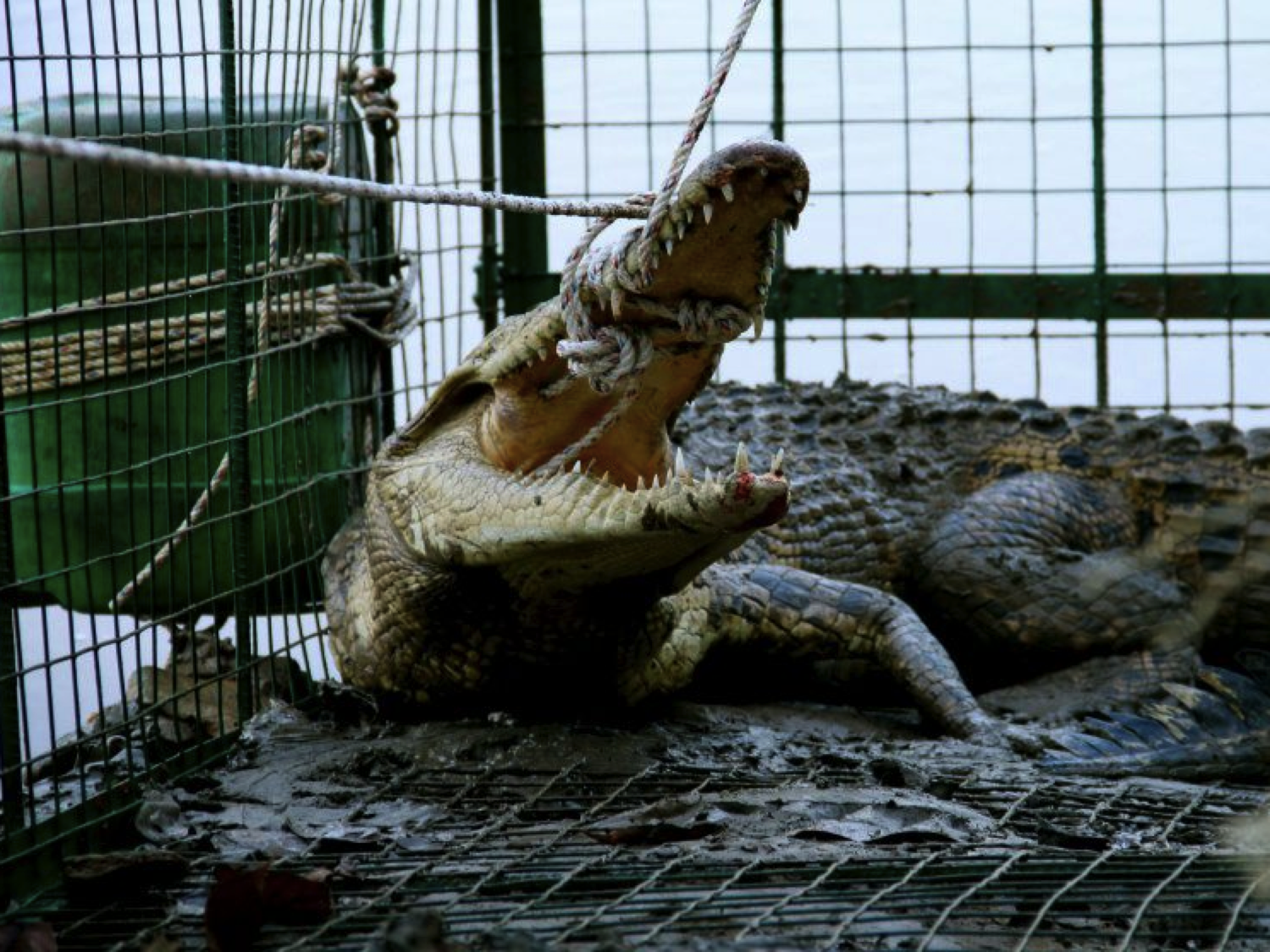 Animal is safely restrained with its eyes covered to reduce stress
Animal is safely restrained with its eyes covered to reduce stress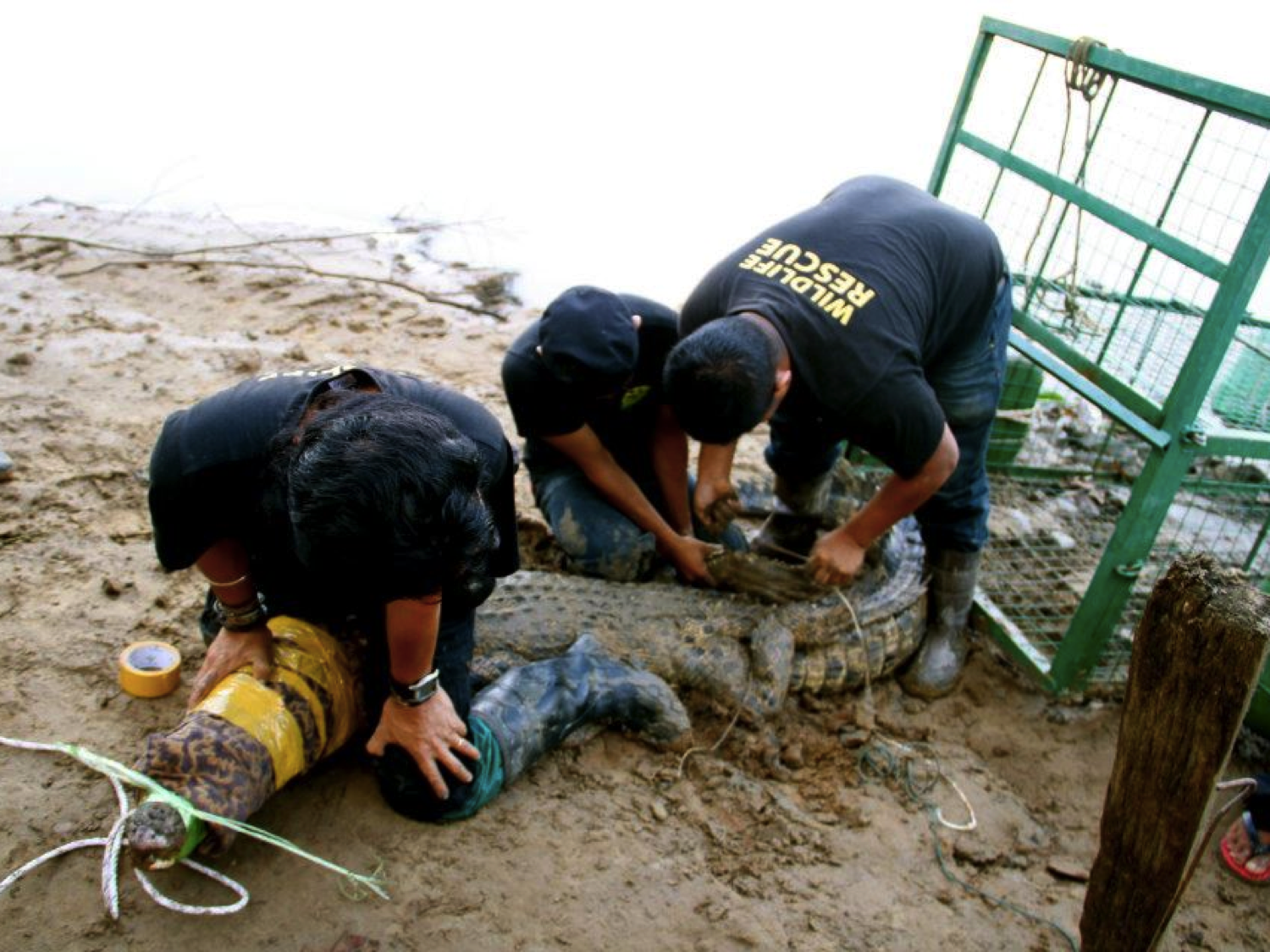
positioning the GPS tag (E-obs model not shown) between the osteoderms (keeled scales_ of the nuchal plate (back of the neck)
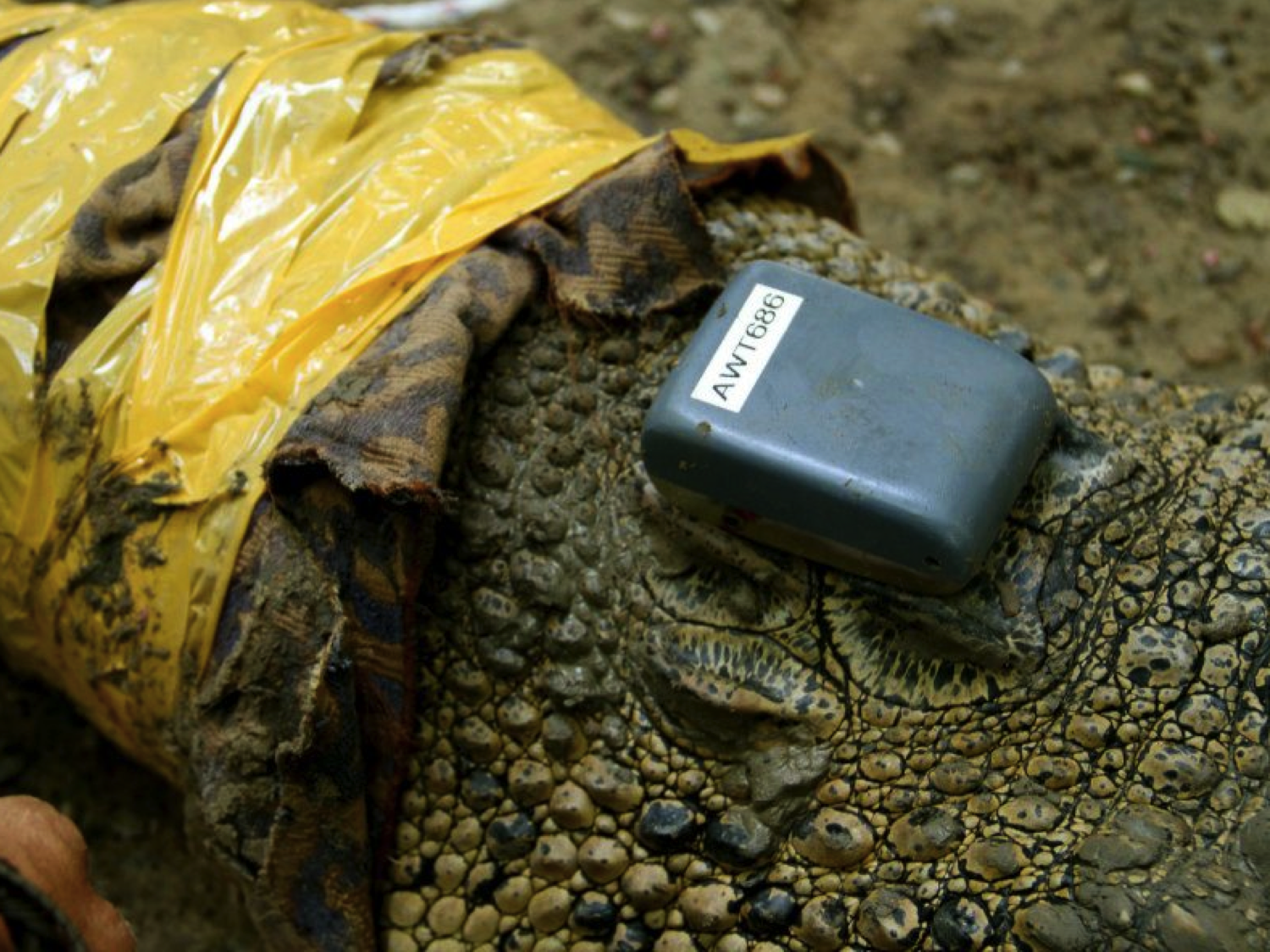
Quick release of the animal at the site of capture.
All capture and tagging photographs are courtesy of Jean-Marie Cornuel.
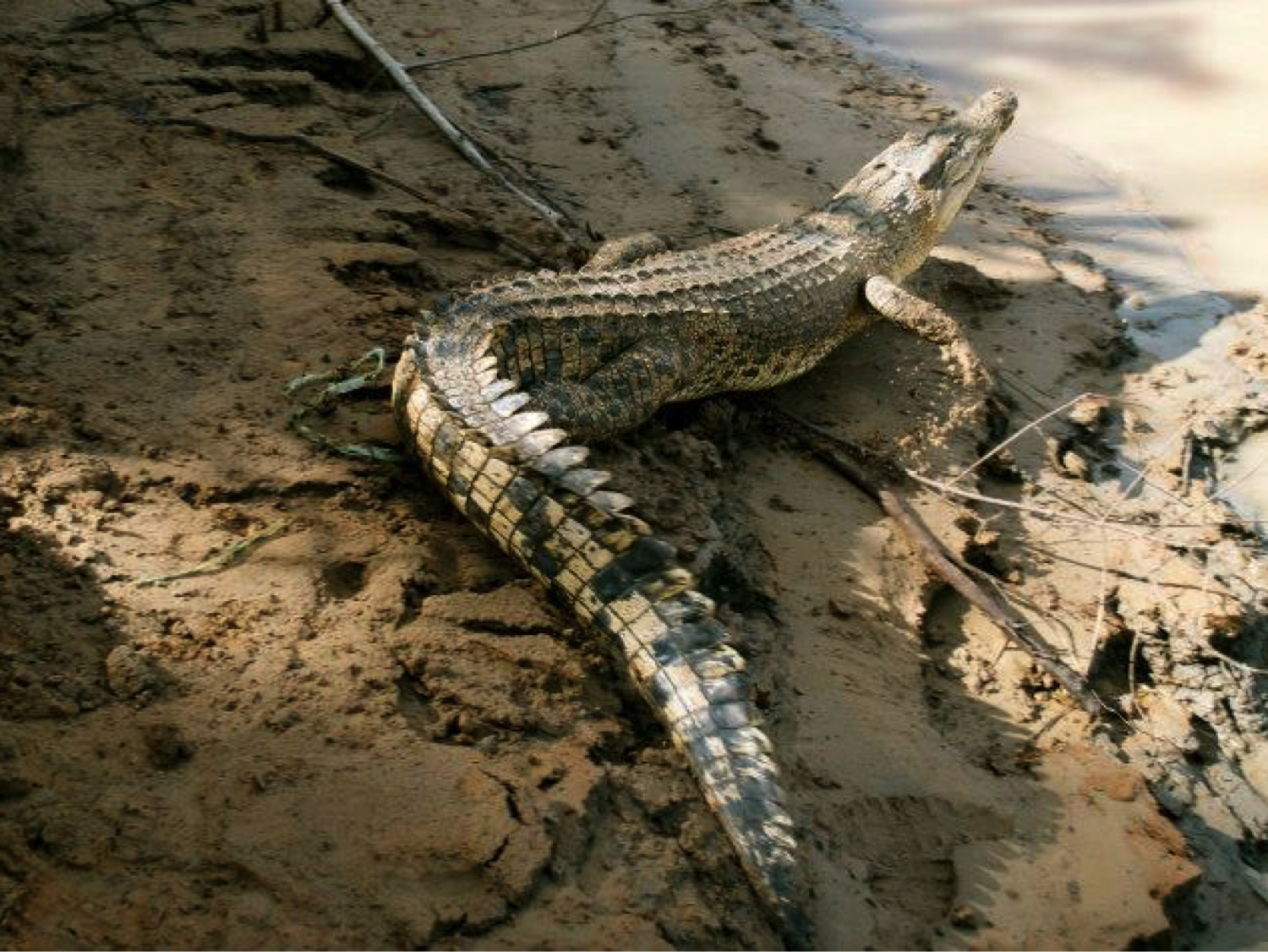
Project Backers
- 15Backers
- 100%Funded
- $2,500Total Donations
- $166.67Average Donation
